Vicent Cucarella Ramón - Benjamin Drew
Здесь есть возможность читать онлайн «Vicent Cucarella Ramón - Benjamin Drew» — ознакомительный отрывок электронной книги совершенно бесплатно, а после прочтения отрывка купить полную версию. В некоторых случаях можно слушать аудио, скачать через торрент в формате fb2 и присутствует краткое содержание. Жанр: unrecognised, на английском языке. Описание произведения, (предисловие) а так же отзывы посетителей доступны на портале библиотеки ЛибКат.
- Название:Benjamin Drew
- Автор:
- Жанр:
- Год:неизвестен
- ISBN:нет данных
- Рейтинг книги:3 / 5. Голосов: 1
-
Избранное:Добавить в избранное
- Отзывы:
-
Ваша оценка:
- 60
- 1
- 2
- 3
- 4
- 5
Benjamin Drew: краткое содержание, описание и аннотация
Предлагаем к чтению аннотацию, описание, краткое содержание или предисловие (зависит от того, что написал сам автор книги «Benjamin Drew»). Если вы не нашли необходимую информацию о книге — напишите в комментариях, мы постараемся отыскать её.
Benjamin Drew — читать онлайн ознакомительный отрывок
Ниже представлен текст книги, разбитый по страницам. Система сохранения места последней прочитанной страницы, позволяет с удобством читать онлайн бесплатно книгу «Benjamin Drew», без необходимости каждый раз заново искать на чём Вы остановились. Поставьте закладку, и сможете в любой момент перейти на страницу, на которой закончили чтение.
Интервал:
Закладка:
At last, I found an opportunity to escape, after studying upon it a long time. But it went hard to leave my wife; it was like taking my heart’s blood: but I could not help it – I expected to be taken away where I should never see her again, and so I concluded that it would be right to leave her. [Here Atkinson’s eyes filled with tears.] I never expect to see her again in this world – nor our child.
Throughout the collection we read about mothers, fathers, sisters, or brothers living in different places but feeling close to one another, of male slaves with free wives but also of slaves reared by aunts and grandmothers that cultivate familial values and follow the Christian precepts needed to acquire subjecthood. In this sense, Drew’s abolitionist agenda when composing the testimony of the fugitives draws from an assemblage of techniques used in popular novels and sentimental fiction of the nineteenth century that were ideologically employed to shape up the slave narratives as melodramatic in tone, but at the same time didactic in their appeal to commonly held moral values. In this regard, Edelstein also senses the author’s constraints and concludes that, “when faced by the complexities of slave family relationships, he simplified them and thereby distorted the testimony by making all slave families correspond to the norms of nineteenth-century white society” (xxv). Taking into consideration the abolitionists’ political agenda, Drew performs a kind of literary ventriloquism to display a strong appeal to the religious values of their white audiences, as well as to argue that slavery dehumanized the masters as well as degraded the slaves. Thus, the edition of these narratives sought to expose the slaveholding ideology as religious hypocrisy, and to recognize the slave as the true spiritual pilgrim that needs to be nationally redeemed. Moreover, by appealing to the religious and political values of the white readers, Drew’s slave narratives are turned into arguments that evidence the humanity and agency of Black people.
The morality attached to these new African Canadian subjects is also divulged when they value, and nurture, the exclusion of alcohol in Black communities. Definitely, temperance was a much-valued political issue for these ex-slaves as part of their own nineteenth-century political plan. Both before and after the American Civil War, whites associated alcohol and drugs with Blackness and enslavement. The white supremacist fear of African American freedom manifested itself in the circulation of stereotypes of Blacks as drunkards or violent individuals. As Carole Lynn Stewart expounds, “[w]hile that association is a product of the transatlantic slave trade and the creation of a ‘black Atlantic,’ the revolutionary and antebellum periods in the United States were formative in conflating inebriety with enslaved Africans” (7). Hence, during slavery, “theories of ‘black savagery’ and the predisposition to lust and intemperance were commonly associated with African people” (Stewart 7). The association of Black skin with disease as well as the link between alcohol and poverty bears similarities, as does chattel slavery and the metaphors of slavery with the bottle. Both chattel slavery and alcoholism were states of defeat and humiliation for a society that was at the outset of developing highly individualist and white supremacist ideologies. The traffic of slaves and the beginning of the rum and distilled alcohol trade bore a direct and ideological connection. The intertwined nature of African bodies as commodities and materials like sugar and rum “also undergirds the meaning of freedom for numerous American temperance reformers who understood temperance as coeval with actual political and social freedom” (Stewart 10).
The temperance movement, born out of the “Protestant asceticism and its work ethic” (Stewart 7), unfolded, then, as concerned with the inculcation of Protestant values and the regulation of work and society, and got established as one of the most important reform movements of the nineteenth century in North America. Temperance evolved from a zealous, religious movement into a more worldly concern as it was considered that alcohol altered social factors such as labour, behavior and even the economy. Nevertheless, controlling individuals became more problematic when the United States became a slave society, which led to the assumption that metaphors of enslavement began to permeate temperance along the nineteenth century. Sooner than later, temperance and abolitionism joined forces and ideologies. Both became international movements with roots in Protestant evangelism and reform that sought to eradicate such social evils from society. In fact, temperance joined abolitionism and women’s rights as “the most prominent reform movement in the nineteenth century – and it was intertwined with both movements as the foundation of either moral or civil behavior” (Stewart 8). Thus, the abolitionist movement assumed the fight for temperance as a part of their intellectual and social concern and, more particularly, they thoughtfully focused on the removal of the purported intemperance drive of Black slaves.
By the time fugitive slaves arrived in Canada West, escaping from slavery and in search of an opportunity to create settlements and permanent homes, temperance became a fundamental shield of character. Mary Ann Shadd’s plea for a temperance boarding house in Chatham, Ontario, exemplifies this movement and testifies to the importance of this pivotal issue for the legitimate recognition of Black people both as humans and as Canadian citizens. As she openly harangued: “The planned black settlements in the province either required or recommended temperance. In communities throughout Canada West, local blacks formed societies, like the African Temperance Society of St. Catharines, to promote abstinence from intoxicating beverages” (qtd. in Stewart 46). Shadd is one of the members of the Black temperance movement who also sought to inculcate the anti-alcohol ideology upon the newly located African Canadians. African American leaders and members of the temperance movement in the antebellum period, among which Shadd figures prominently, recognized the problems that alcohol posed for the poor and the enslaved, and therefore they linked abstinence with abolition, that is, with freedom.
These temperance movements strove for the universalist ambitions of individual sovereignty, restraint, and enlightened freedom, which were the hallmarks of civil society and public space, promoted in pursuit of an equal and virtuous society. The new freed Black people faced considerable problems such as poverty as well as a potential alcohol abuse that in the short run hindered the possibility of fostering social transnational connections. The Black temperance movement also took shape in Canada, especially after the fugitive slaves fled to the north still holding a highly vulnerable position. Lorene Bridgen explains in her pioneer article on Black Canadian temperance movement titled “On Their Own Terms: Temperance in Southern Ontario’s Black Community (1830-1860)”, that “the temperance movement […] played a major role in the African Canadian community’s struggle for equality and respect,” because “Black temperance advocates sought to improve the lives and reputations of their fellow community members” (64). For Bridgen, “temperance was a critical issue to African Canadians as well, mainly because temperance offered them a way to take control of their lives in a country without slavery. This is a key point that scholars have ignored” (64).
The relationship between the fugitive slaves, and later African Canadian citizens, and the temperance movement became intrinsically attached since it was a legitimate way toward achieving a personhood. In this respect, Bridgen confirms that, “although Canadian Blacks were legally free after 1834, Whites still saw them as economically and socially inferior. Black leaders believed that remaining temperate would prove to Whites that they were a moral people, who deserved their freedom” (64). Put briefly, under the influence of the temperance movement, the vast majority of “African Canadians hoped that temperance would lead to respectability” (Bridgen 67). It is only logical then that the practice of temperance appears throughout Benjamin Drew’s collection. As a proper abolitionist-driven narrative, Black reverends as well as Black men and women who were fugitive slaves recount and muse about the unwholesome consequences of alcohol. Rev. R.S.W. Sorrick recalls his time under slavery in the U.S. and feels horrifed for the consumption of alohol and the moral corruption it brought to enslaved people: “I never saw so much spirit consumed by the colored people as at that time, but most of those who were among the vicious, are dead and gone. Now the evil of drinking is comparatively slight, pretty much done away, and those who have come in within a few years, are generally well behaved and industrious”. This denunciation of the pernicious nature of spirits is also addressed to masters and overseers. For instance, in John Holmes’ recollection the overseers appear as ill-mannered and doomed due to drinking: “Another brother was very hard toward his wife, his slaves, and everybody else. His name was B–J–. He was so bad he could n’t live any longer – he killed himself by drinking a quart of brandy from a case-bottle – a case-bottle full. Next morning he was dead”. Holmes’s image of the evil U.S. slaveholders is contraposed to the Canadian benevolences: “The colored people are mostly given to hard work: for the time we have been here, we have made great progress in this country”.
Читать дальшеИнтервал:
Закладка:
Похожие книги на «Benjamin Drew»
Представляем Вашему вниманию похожие книги на «Benjamin Drew» списком для выбора. Мы отобрали схожую по названию и смыслу литературу в надежде предоставить читателям больше вариантов отыскать новые, интересные, ещё непрочитанные произведения.
Обсуждение, отзывы о книге «Benjamin Drew» и просто собственные мнения читателей. Оставьте ваши комментарии, напишите, что Вы думаете о произведении, его смысле или главных героях. Укажите что конкретно понравилось, а что нет, и почему Вы так считаете.
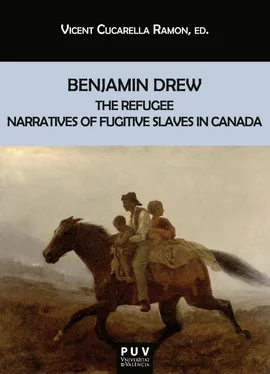

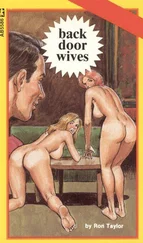

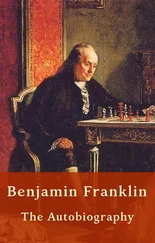
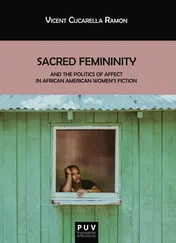


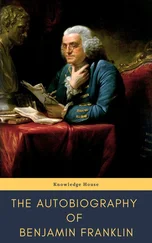

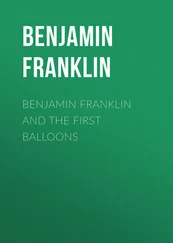
![Benjamin Franklin - Memoirs of Benjamin Franklin; Written by Himself. [Vol. 2 of 2]](/books/747975/benjamin-franklin-memoirs-of-benjamin-franklin-wr-thumb.webp)
![Benjamin Franklin - Memoirs of Benjamin Franklin; Written by Himself. [Vol. 1 of 2]](/books/748053/benjamin-franklin-memoirs-of-benjamin-franklin-wr-thumb.webp)